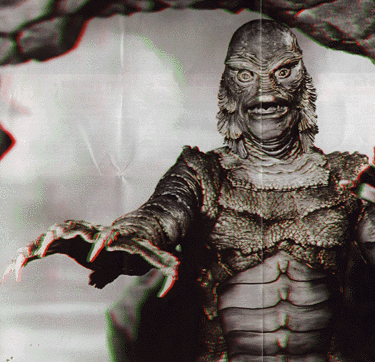
The formal study of three dimensional imaging and depth perception started in the 16th century, with Leonardo Da Vinci, a true master in the art of perspective and depth. Da Vinci was aware that each of our eyes perceives a slightly different image - seeing things from a slightly different angle - than the other eye. It is the combination of these two views that gives humans the ability of depth perception. The idea of taking photographs at slightly different angles (as our eyes would function) and using a device to combine the pictures was the basis of stereoscope and stereographic graphics. In the late 19th century, Joseph D'Almeida came upon a new way to view 3D based on the same principles. In this system, the two images would be created using two different lights, red and green/blue. By looking through light filters, one could achieve the 3D effect. The technical term for this technique was 'anaglyph,' Greek for 'again' and 'sculpture.'
Anaglyphs' first mass medium was the movie theater. William Friese-Greene was the first to make a 3D anaglyphic film in 1889. The early forms of anaglyphic film were called 'plasticons' or 'plastigrams.' One innovative filmmaker created a film in which the view could choose the ending which they wanted to see. By looking through the red filter, the viewer could enjoy the happy ending, or if the viewer preferred the tragic ending, they could simply look through the green filter.

One of the popular movies to use anaglyphic imaging was "The Creature From the Black Lagoon" (1954)
In the 1950's, magazines and comic books took over the anaglyph industry. Joe Kubert and Norman Maurer were the create the 3D comic book, using transparent acetates to manipulate the red and green images. These comic books, starring Danger Mouse, came with a pair of red/green "space goggles" that allowed you to view the anaglyph images.
Today, we still see anaglyph 3D in magazine and movie theaters, including Disney's extremely popular 3D movie, "Captain E-O" starring Michael Jackson. The August 1998 issue of the National Geographic used 3D anaglyphs to present photographs of taken of Mars as well as the remain of the Titanic.

Pathfinder touched down on July 4, 1997, and recorded images and data that astounded the world. Newcott. Images by NASA / Jet Propulsion Laboratory. -- National Geographic, August 1998
|
| ||
BACK |
|
NEXT |